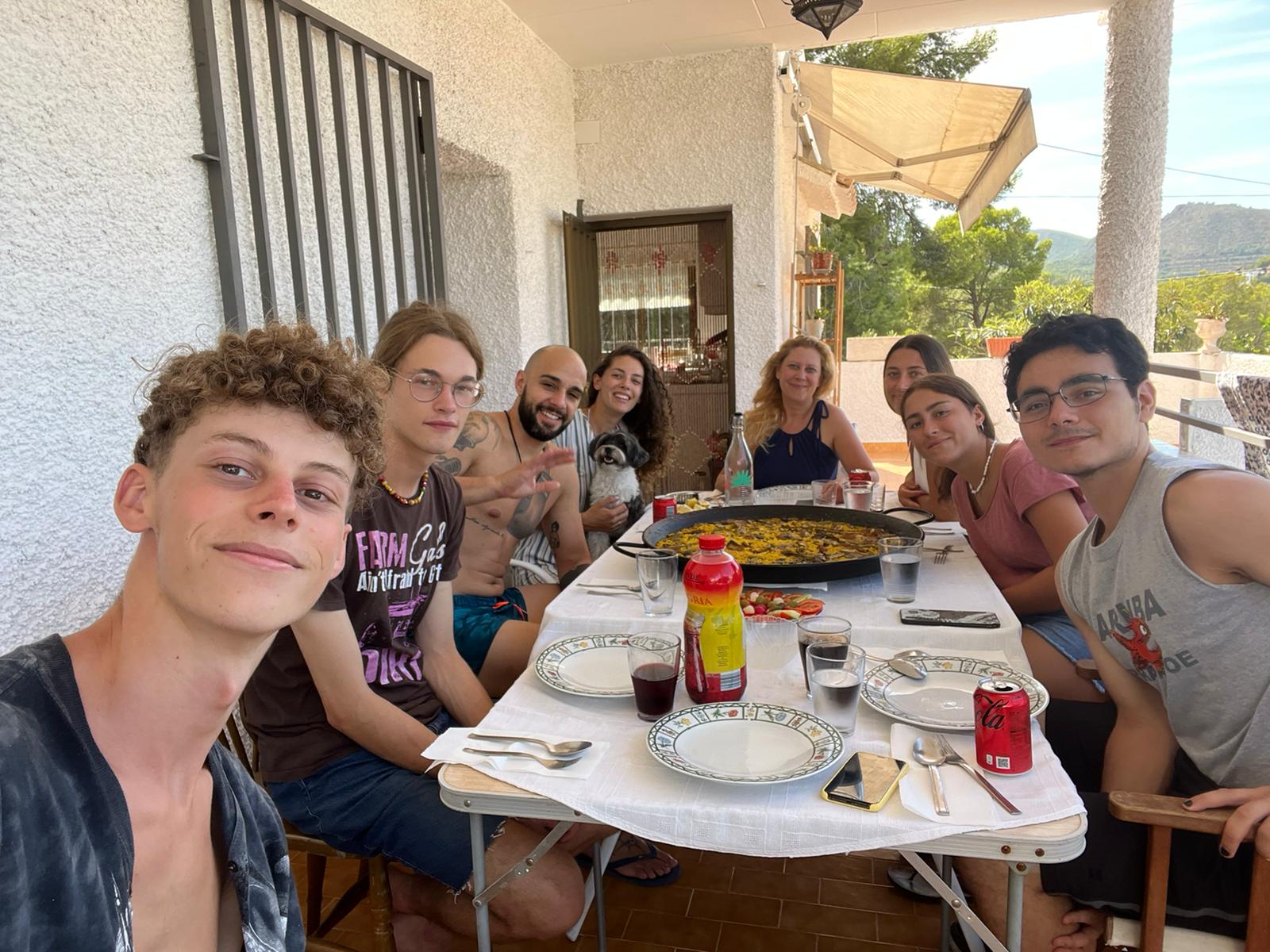

Onomatopoeias undoubtedly constitute a very interesting figure of speech for language learners.. 😥
English speakers will be amazed to discover how certain sounds are written in Spanish and the use of these onomatopoeias in everyday life.
If you were looking to learn Spanish onomatopoeias, you’ve come to the right place!
At Spanish Express, you will find the most important information about this group of words. We will break down for you what exactly onomatopoeias consist of and give you the most used examples in everyday language. 😁
Come and improve your overall Spanish level by reading through the material we provide. 💪
What are onomatopoeias?
According to the Dictionary of the Spanish Language, onomatopoeias are words formed from the imitation of the sound they seek to designate.
If we study the etymology, we will see that “onomatopoeia” comes from the Latin word “onomatopoeia”, which in turn has its origin in the Greek term “onomatopoiia”.
The latter word is composed of “onoma” (meaning “noun”) and “poiein” (meaning “to create”).
In other words, “onomatopoeia” refers to the creation of words.
However, onomatopoeias are not considered a class of words per se, largely because of the subjectivity involved in writing a sound according to your auditory appreciation.
Here is a list of the most important and used onomatopoeias in the Spanish language. These sounds are ideal to practice with your Spanish-speaking friends and to reach a new level in your learning.
5 onomatopoeias of human sounds
From the beginning we must be clear that human sounds are many and varied. However, they are not infinite, because our phonatory apparatus limits us.
These are sounds that we make every day: when we chew, when we cough, when we sigh and in any other occasion we can imagine.
Here you can find some onomatopoeias of very characteristic human sounds used in colloquial language.
| Sound | Onomatopoeia |
| Kiss | Muá |
| Eating | Ñam, ñam, ñam |
| Unintelligible conversation | Bla, bla, bla |
| Sneeze | ¡Achís! |
| Swallowing | Glu, glu, glu |
5 animal onomatopoeias
The animal kingdom has a huge variety of sounds.
In our daily lives, we usually use the onomatopoeias of the animals closest to us, such as dogs and cats.
Still, it is an interesting exercise to find out which onomatopoeia corresponds to the sound of your favorite animal.
| Sound | Onomatopoeia |
| Dog barking | ¡Guau, guau, guau! |
| Cat meow | ¡Miau, miau, miau! |
| Cow mooing | ¡Muuu, muuu, muuu! |
| Sheep bleat | ¡Beee, beee, beee! |
| Pig grunting | ¡Oink, oink oink! |
5 onomatopoeias of the Street
Other very useful onomatopoeias are those that refer to the sounds of the street.
From the sound of a door closing to the sound of footsteps speeding away, there are sounds whose onomatopoeias are useful to know.
Take a look at the following chart:
| Sound | Onomatopoeia |
| Horn Honk | ¡Piiii, piiii! |
| Knock on the door | ¡Toc, toc, toc! |
| Clock | Tic-tac, tic-tac, tic-tac |
| Explosion | ¡Booom! |
| Phone | ¡Riiing, riiing! |
5 onomatopoeias for laughter
Logically, laughter has its own onomatopoeia.
And even more: each type of laughter has its own way of spelling.
In the following table you can find the way to write laughter according to the intention.
| Sound | Onomatopoeia |
| Open laugh | ¡Ja, ja, ja! |
| Sly laugh | ¡Je, je, je! |
| Contained laugh | ¡Ji, ji, ji! |
| Exaggerated laugh | ¡Jua, jua, jua! |
| Ironic laugh | ¡Ja, je, ji, jo, ju! |
5 onomatopoeias of nature
Have you ever wanted to capture the sound of rain or wind?
Just like English, Spanish also has its own way of writing the various sounds of nature.
Here you can find the onomatopoeias of the most characteristic sounds in this section.
| Sound | Onomatopoeia |
| Bubbles | ¡Glu, glu, glu! |
| Drop of water | ¡Ploc! |
| Heavy rain | Plic, plic, plic |
| Branch breaking | ¡Crac¡ |
| Wind | Sss, sss, sss |
Fact
Before finishing today’s lesson, we want to give you an interesting fact that will help you in your Spanish learning process.
Onomatopoeias are not considered a word class, and are rarely alluded to or described linguistically. For this reason, there is still no standard spelling, although the RAE suggests writing it in quotation marks, separated by commas or with exclamation marks.
On the other hand, due to their expressiveness, onomatopoeias are widely used in literary language. It is very common to come across them when reading a novel, a short story or a poem.
Here are a couple of examples:
In the novel Doña Bárbara, by Rómulo Gallegos, we can read:
No tiene de qué darlas, niño. Luzardero nací y en esa ley tengo que morir. Por estos lados, cuando se habla de nosotros los Sandovales, dicen que y que tenemos marcado en las nalgas el jierro de Altamira. ¡Je! ¡Je!.
Similarly, in the play Así que pasen cinco años, by Federico García Lorca, we find the following:
(El Gato, de azul, con dos enormes manchas rojas de sangre en el pechito gris y en la cabeza. Avanzan hacia el público. El Niño trae al Gato cogido de una pata.)
GATO: Miau.
NIÑO: Chissssss…
GATO: Miauuu
With these examples we end today’s article. However, we leave you with a video to review what we have learned:
Do you want to learn more about Spanish grammar?
At Spanish Express we provide you with the best training so that you can successfully take the SIELE and DELE. As if that wasn’t enough, we also help you with your IGCSE and A-Level studies! 🎉
With private sessions, our teachers will adapt to your specific learning needs. That way, you can work on the topics and objectives you want in order to achieve outstanding grades.😎
Study online from your home or office. There is also the option to study from your teacher’s home in Spain.💃
That’s right! Spanish Express allows you to travel to Spain and discover beautiful cities while preparing for your exams.
Our Spanish Homestay Immersion Programme (SHIP) welcomes you in the most beautiful destinations in Spain.
Here you can read the experience of Liam, one of our students in Valencia.
Remember to subscribe to our newsletter. That way you will be up to date with our blog and you will receive exclusive information and material that will help you in your Spanish learning. 👀
Visit our website or contact us to learn more about our programs, courses or workshops.🤗
Learn Spanish with us!
Alejandro Coita Sánchez
Spanish Express Blogger




